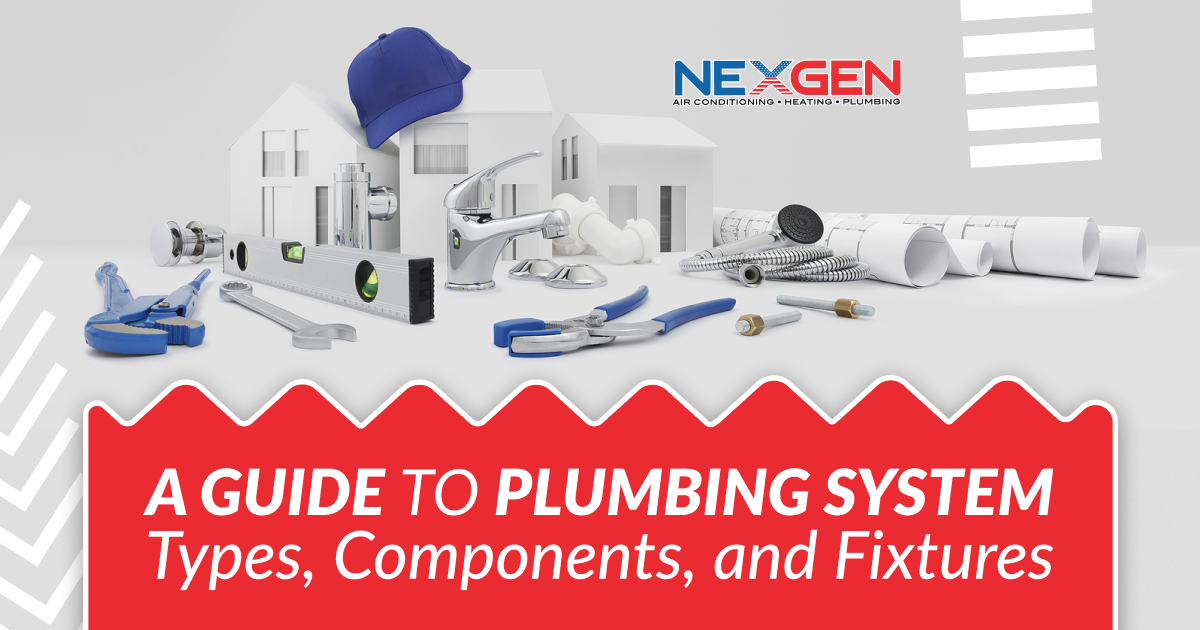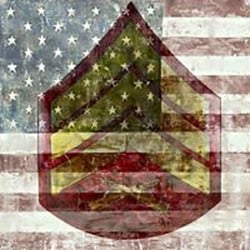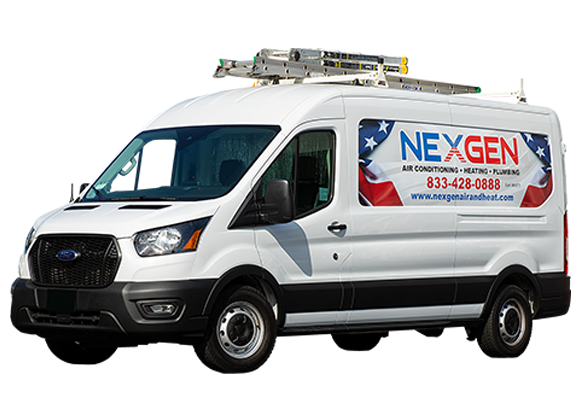A Guide to Plumbing System Types, Components, and Fixtures
 In this guide to plumbing systems, we’ll cover the various elements that supply, drain, and manage water in your house or building. A functioning system provides all the water you need and use. Most people don’t think about its complexity. It incorporates many parts and, which may seem surprising, multiple systems. We’ll now explain what your plumbing system is made of:
In this guide to plumbing systems, we’ll cover the various elements that supply, drain, and manage water in your house or building. A functioning system provides all the water you need and use. Most people don’t think about its complexity. It incorporates many parts and, which may seem surprising, multiple systems. We’ll now explain what your plumbing system is made of:
Types of Plumbing
There isn’t one but three systems that make up the plumbing in your home. Each fulfills a distinct function and, together, they allow for the delivery and removal of water and waste. These systems are:
Potable Plumbing
A potable plumbing system brings water into a structure for drinking, cleaning, and other purposes. It includes the main plumbing valve where you can turn off the water supply and the water meter that tracks water usage. Other components include long or short straight pipes, T-sections that direct water at right angles, elbows that provide directional adjustments, and brass and gate valves that help regulate water flow.
Sanitary Plumbing
A drainage system removes human waste and wastewater. To ensure continuous drainage, a sanitary plumbing system includes vents that maintain atmospheric pressure in the pipes. A gravity system (the most common) uses the ground’s slope to transport wastewater to the sewer. Alternatives include a low-pressure system that integrates a tank and pump and a vacuum system that operates on electricity and controls drainage in flat areas, seasonal properties, or structures built on reclaimed earth.
Stormwater Plumbing
A stormwater plumbing system protects your home from rainwater and melting snow and ice. In a gravity-fed system, pipes are sloped so water can flow smoothly. Pipe diameter is determined by the size of the drainage area and the average rainfall for a region. If there’s insufficient sloping, a pump-based system may be used; it collects rainwater in tanks and pumps it to a sewer or outside drainage system. A stormwater discharge and harvesting system transports water to a nearby body of water, like a lake, stream, or ocean.
Types of Pipes
Plumbing pipes are available in different materials and sizes. A plumbing system isn’t just one set of pipes. In addition to water supply and drainage lines, you also have separate pipes for hot and cold water. Plumbing pipes are available in different materials and sizes as well, depending on their function and the environment they’re used in.
Here’s a guide to plumbing pipes covering commonly used materials:
- Copper: Copper is the most common material for rigid pipes, as it’s corrosion-resistant, withstands high pressure and temperature extremes, and can last over 50 years. Flexible copper pipes are also available; they are malleable, so they can be bent to fit tight spaces. Copper pipes come in various thicknesses as well.
- Stainless Steel: Stainless steel pipe is expensive but resistant to corrosion and damage by extreme weather, human activities, and tree roots. Available in many sizes and lengths, it can be connected to other pipes with special couplings.
- PVC: Polyvinyl chloride (PVC) pipes can transport hot and cold water. Commonly used for plumbing fixture drain lines, PVC may also be used as the main water supply pipe. It’s also affordable, easy to install, resistant to blockages, and has some flexibility to tolerate high water pressure.
- CPVC: Chlorinated polyvinyl chloride (CPVC) pipes can withstand temperatures up to 200℉, but are costlier and can break down due to exposure to sunlight.
- Galvanized: Galvanized steel pipes may be found in older homes. They are prone to developing rust that can peel away and contaminate water. Therefore, these pipes are preferred for applications that don’t involve human consumption.
- Cast Iron: Rarely found in new construction homes, cast iron pipes are still used in parts of water distribution systems. They’re strong, heat-resistant, and dampen noise from moving water. Cast iron can be used for primary drainage and sewer lines.
- ABS: Resembling PVC, an acrylonitrile butadiene styrene (ABS) pipe is made of a thermoplastic resin. It’s most often used for interior vent and drain lines. Outdoor use is limited as high temperatures and UV rays can damage ABS.
- PEX: Cross-linked polyethylene (PEX) pipes are made of durable plastic and are often used to supply water. They are rigid yet flexible enough to route through walls, ceilings, and basements. PEX is inexpensive, long-lasting, and assembled without soldering.
Fixtures
Your plumbing fixtures are very much a part of your plumbing system. The bathroom has the highest concentration of plumbing fixtures, including toilets, sinks, tubs, and showers. Each has a system of pipes and fittings. The most complex is the toilet, which contains a bowl, water tank, fill valve, and a flush mechanism with a handle, flush valve, flapper, and other components. The toilet is also sealed to the floor drain by a gasket to prevent leakage (a gasket also seals the tank to the bowl).
In the kitchen, plumbing fixtures are also frequently used. Kitchen sinks can vary in size and complexity. Some have single- or double-bowl configurations. Depending on the model, it may include a spray hose, liquid soap dispenser, and water filtration system. A garbage disposal is also connected to your plumbing system.
The dishwasher is a convenient plumbing appliance. It includes a flexible hose to provide pressurized hot water and a flexible drain line that connects to the kitchen drain pipe. Also, refrigerators with water dispensers require a plumbing connection (usually a small, flexible copper or plastic tube).
Other elements worth mentioning in our guide to plumbing systems include:
- Basement Plumbing: Floor drains, washing machines, water heaters, and supply lines to furnace humidifiers and outdoor faucets are a few plumbing elements you’ll find in the basement.
- Outdoor Plumbing: Hose taps, yard irrigation systems, and septic systems are integral parts of your plumbing system where used.
- Roof Plumbing: In addition to a rooftop plumbing drain vent, gutters, downspouts, and roof flashing and capping are important for water drainage and protection.
Key Takeaways
As you can see, a plumbing system is quite complex. All parts must be correctly installed to ensure your safety, comply with building codes, and avoid water damage. Never try to do plumbing work yourself. It can be dangerous and costly. Always rely on an experienced and licensed professional who has the right tools and can anticipate any issues that may arise while doing plumbing work.
Call NexGen for Plumbing Installation and Repair
A full-service plumbing company in Southern California, NexGen helps choose and install piping and appliances and is available 24/7 to provide emergency repairs. Our fully licensed and insured technicians are knowledgeable, professional, and courteous. They can help with any project or issue.
We hope our guide to plumbing systems, components, and fixtures has helped you better understand how water supply and drainage work and why hiring a professional is so important. If you have further questions or need us for plumbing services, call (833) 729-9735 or contact us online.





















